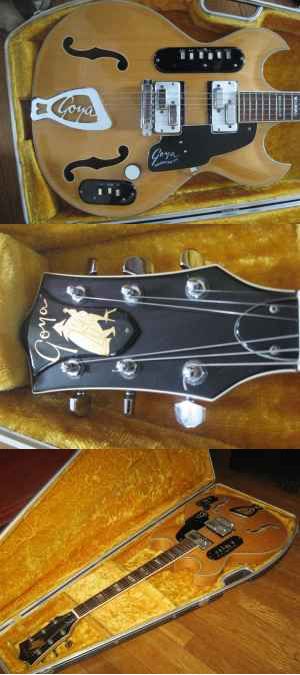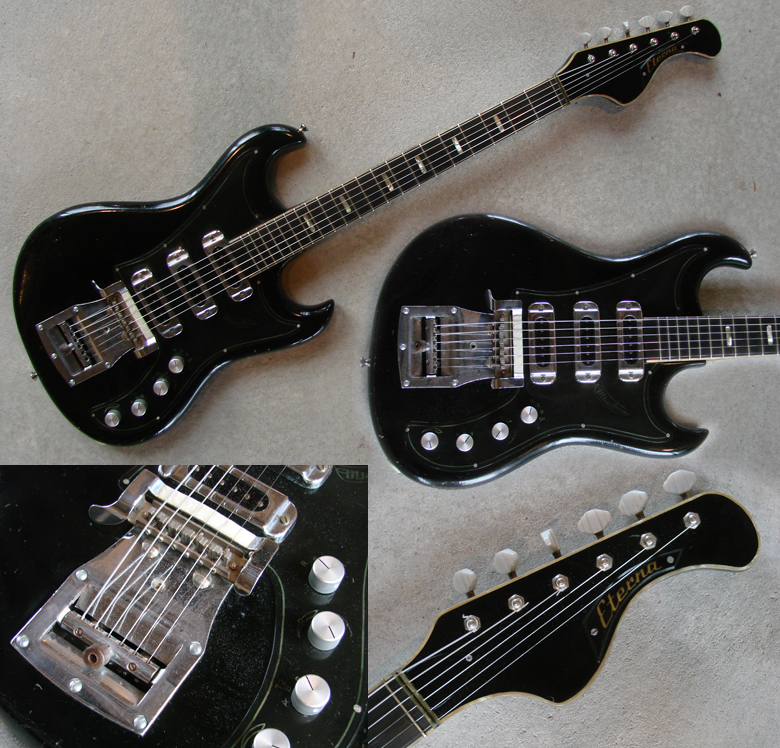
Ladies and Gentlemen, I'm proud and delighted to introduce you to my very own
Musima Eterna, a guitar I bought a few days ago and received this morning! I've been trying for a while to acquire an East-German vintage guitar, and I finally succeeded, with the best model I could dream of - you may remember that I actually posted
here about this guitar last summer.
I'm really not disappointed, and firstly, contrary to things I could read here and there, the sound is pretty cool. I've never played a guitar with 3 single coils (no, I've never played a strat!), so the sound is very new for me. The output is actually too high, and I think that sooner or later I'll slightly modify the electronics (I have no problem with upgrading a vintage guitar, I also already plan to change the tuner heads that are made of cheap plastic) to make it playable on modern amps.
The neck is big and round, but comfortable for me since I've been a classical guitar player and still play a nylon strings guitar, and it's quite good for soulful blues. There are two volume knobs and two rotating switches, I still have to figure how it works but two positions give nice bass sounds. Actually, without effects, the sound is really clear and balanced, when a distortion bring more confusion, but I still have to play it with my regular amp to be sure.
There is one of these huge old school tremolo, but unfortunately I don't have the arm, that looks like a Jaguar one, I think that I can manage to find one. There is a strange device that is probably a mute system, but it's not set and a little bit rusted, i'll have to soak it and the whole bridge in coca-cola (that's how we use it in Europe, also to heal stomac flu) to clean it and see how it really works.
The fretboard inlays are simple and original, and there is a pearloid binding on the neck and headstock. The chrome parts look their age, I intend to clean them intensively and rejuvenate the guitar as much as possible, and to put it on stage very soon!
Guitarz - The Original Guitar Blog - now in its 9th year!
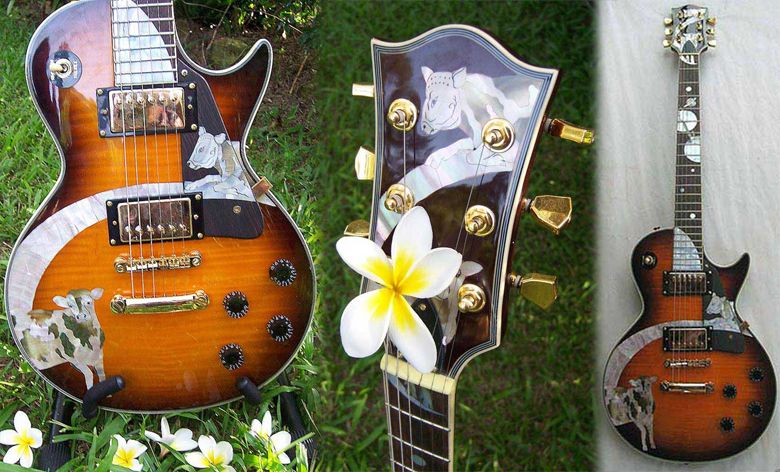 I can only assume that when the "Astro Cows" inlay work for this Les Paul-style guitar was designed, the inspiration was the old children's nursery rhyme: "Hey diddle diddle / The cat and the fiddle / The cow jumped over the moon / The little dog laughed to see such fun / And the dish ran away with the spoon", and in particular the line about the cow jumping over the moon.
I can only assume that when the "Astro Cows" inlay work for this Les Paul-style guitar was designed, the inspiration was the old children's nursery rhyme: "Hey diddle diddle / The cat and the fiddle / The cow jumped over the moon / The little dog laughed to see such fun / And the dish ran away with the spoon", and in particular the line about the cow jumping over the moon.
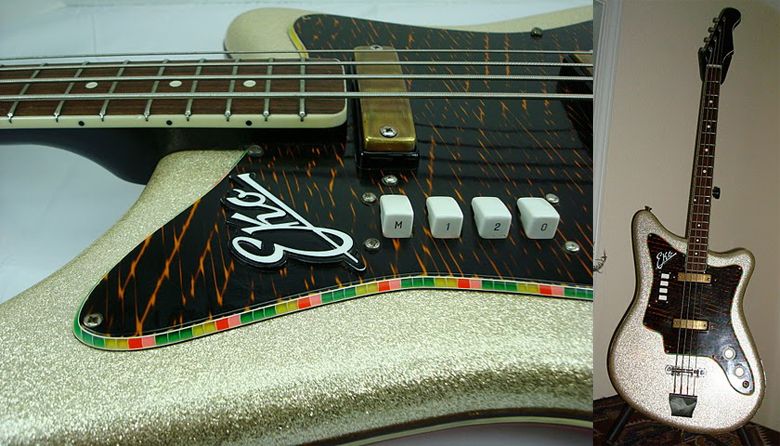

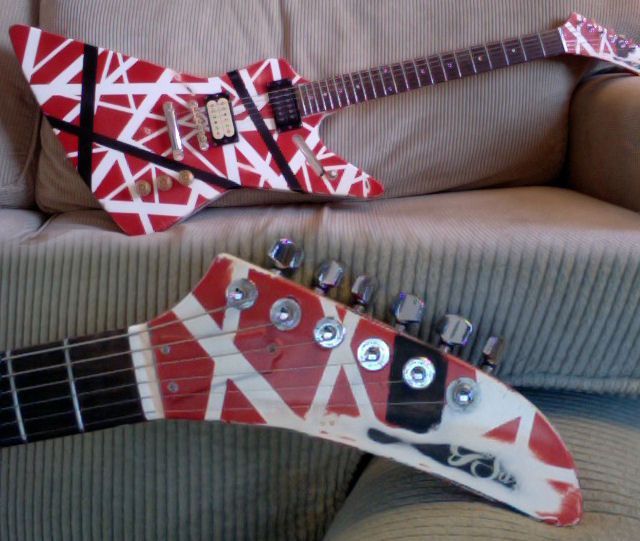

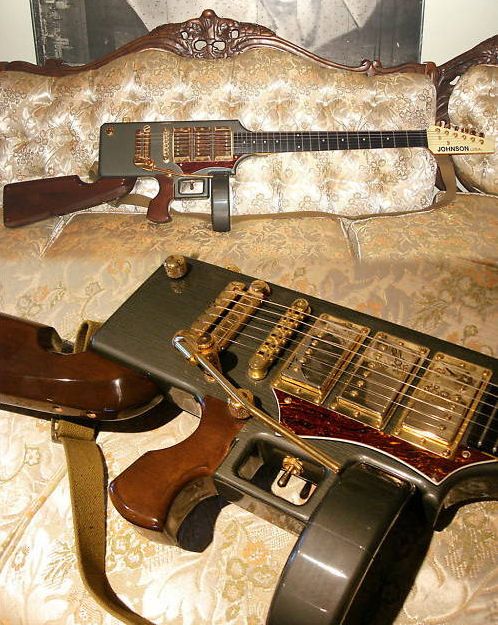
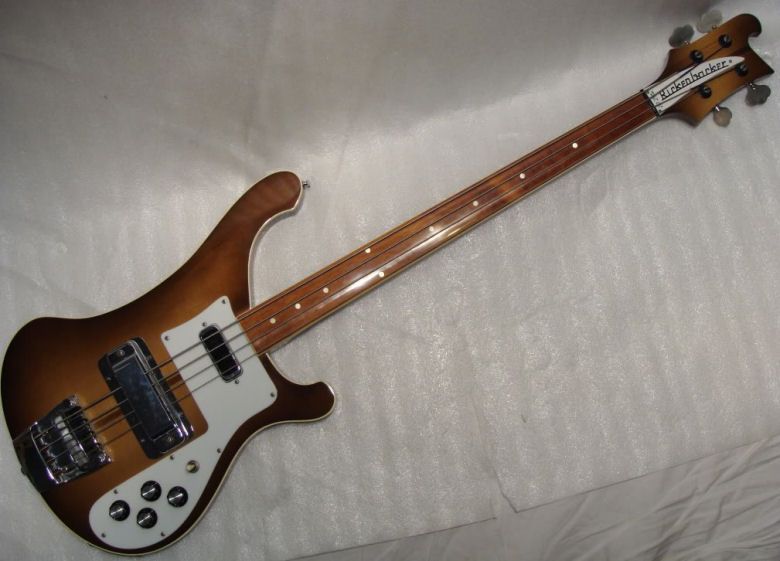

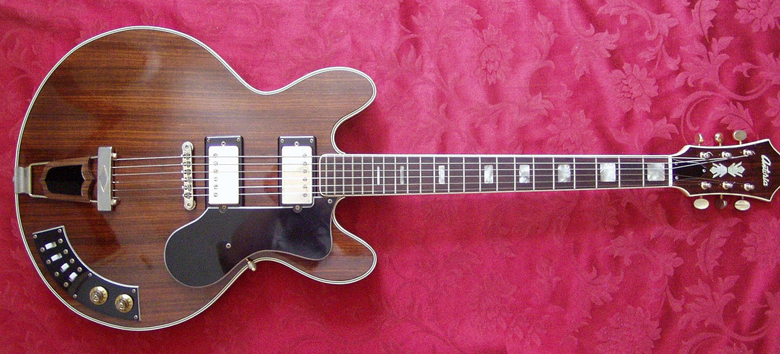

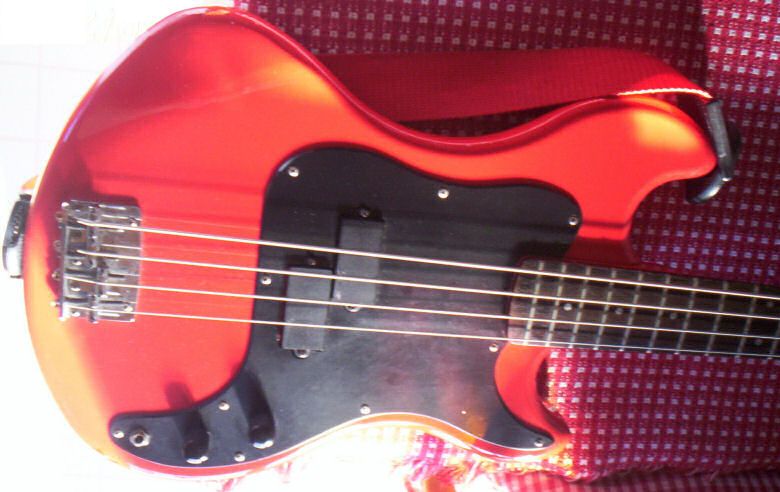
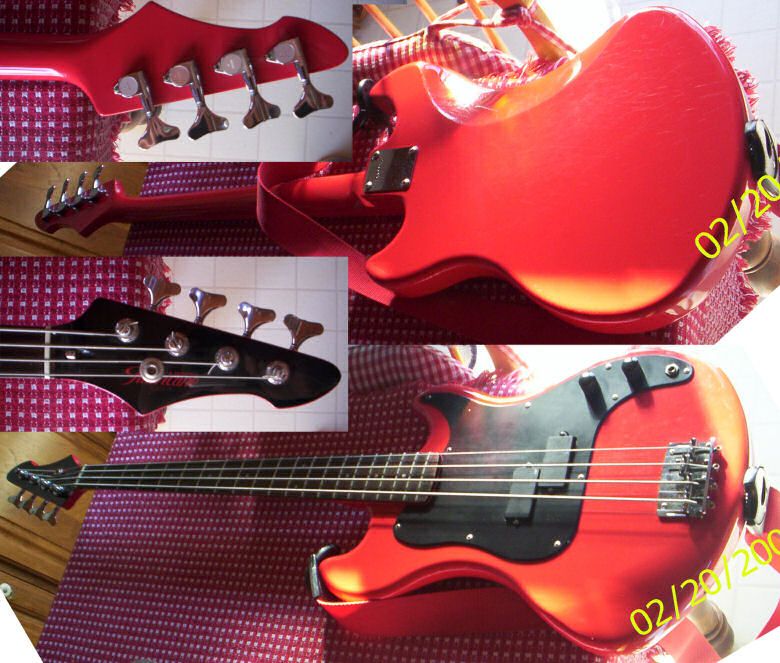

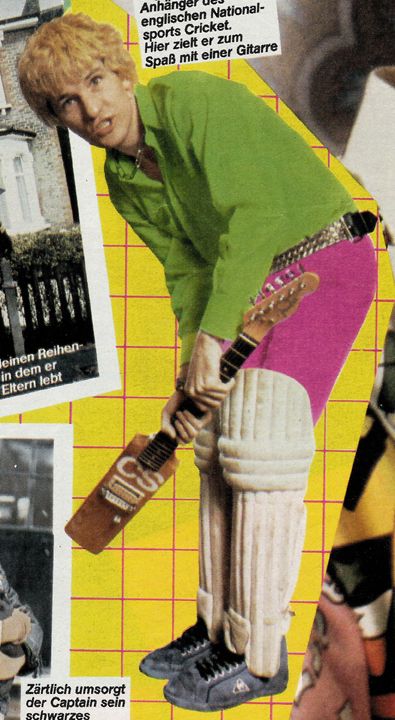


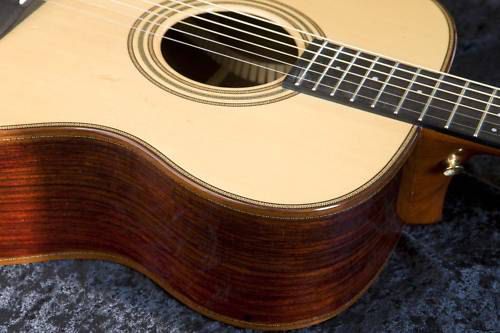


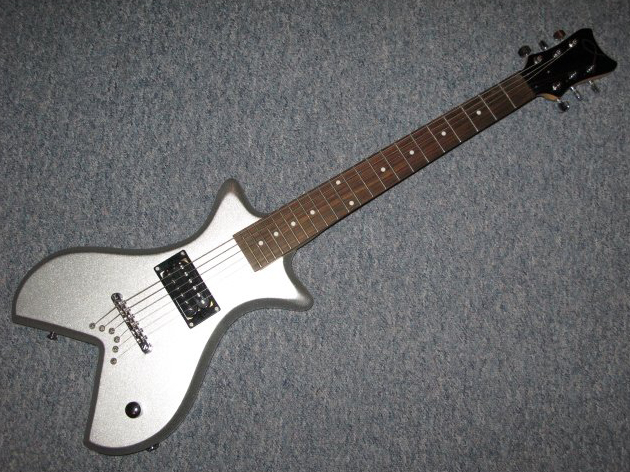
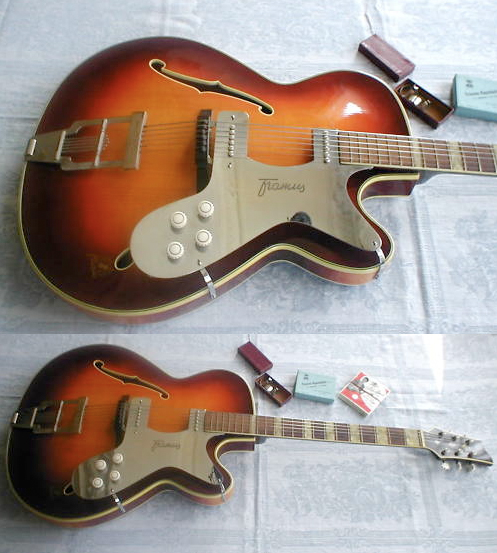
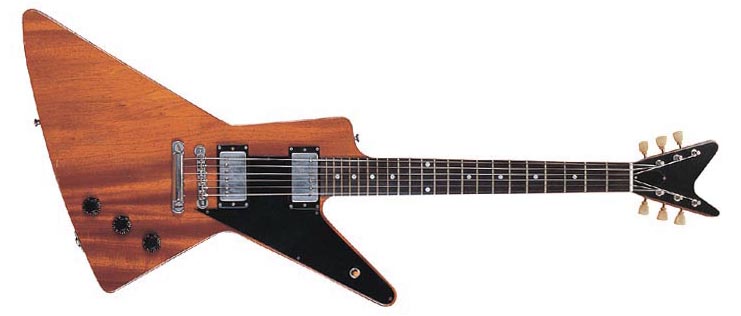
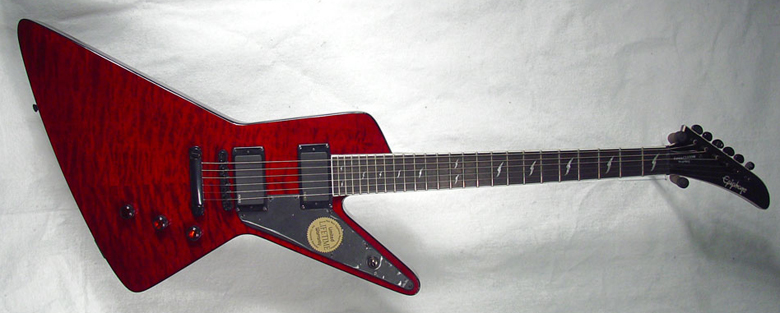


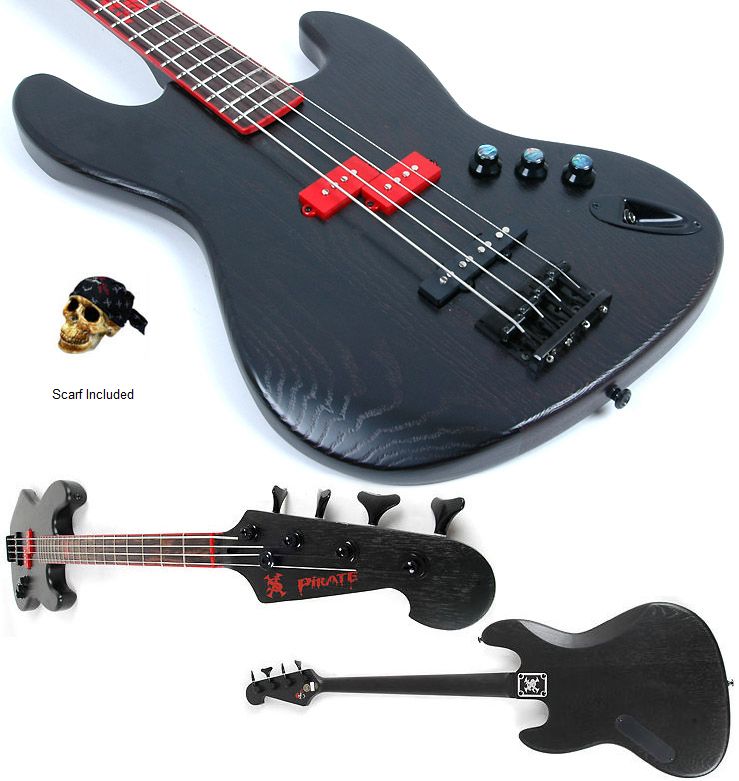
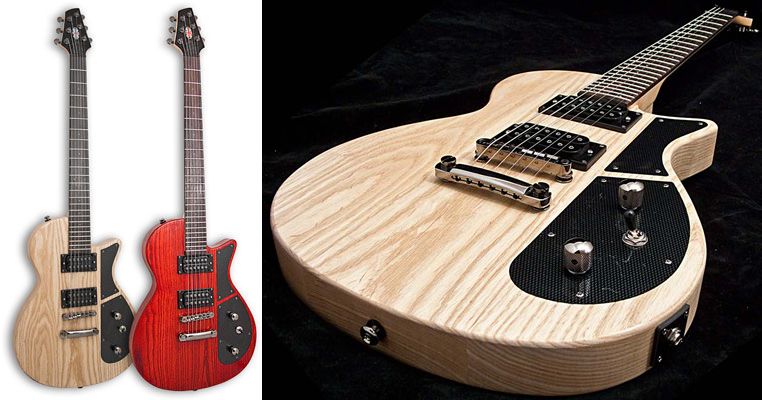




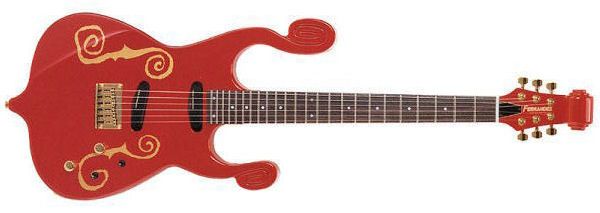
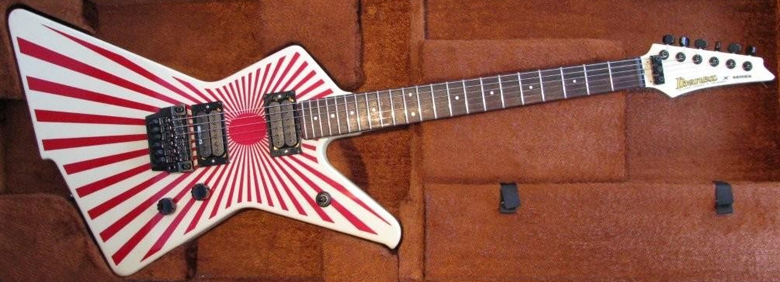


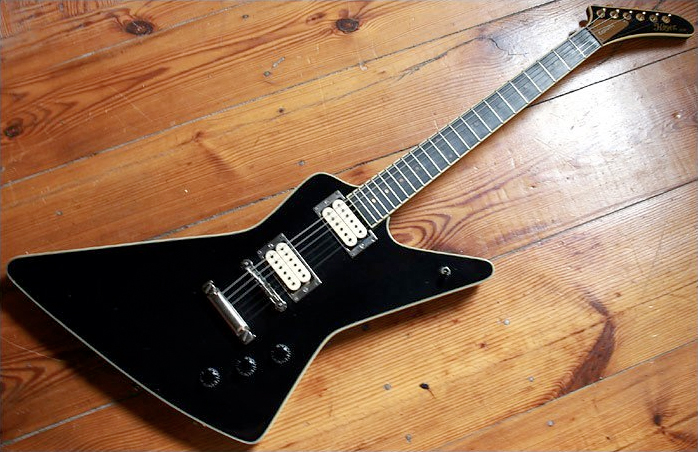

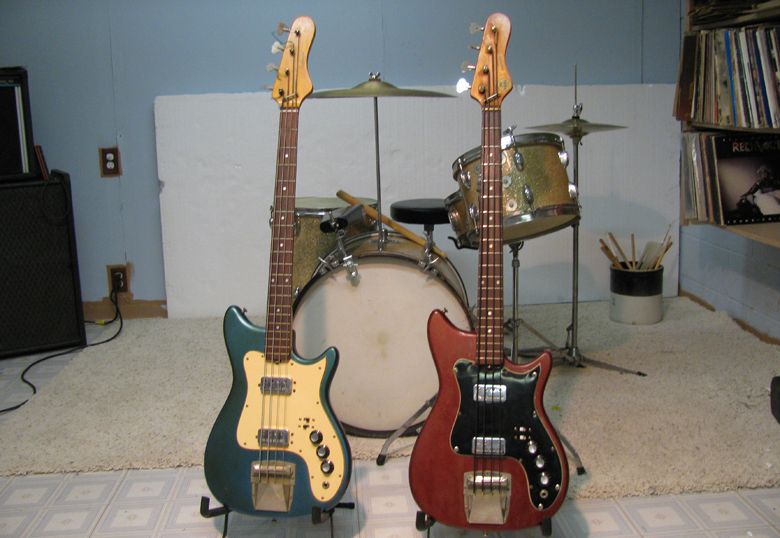



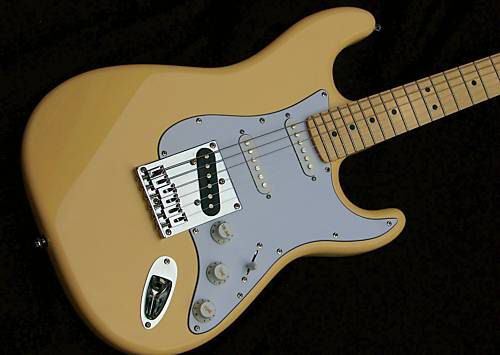

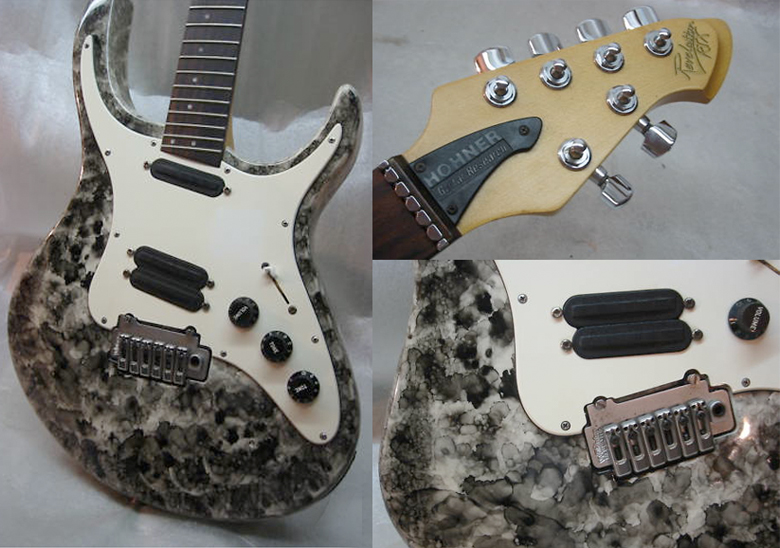
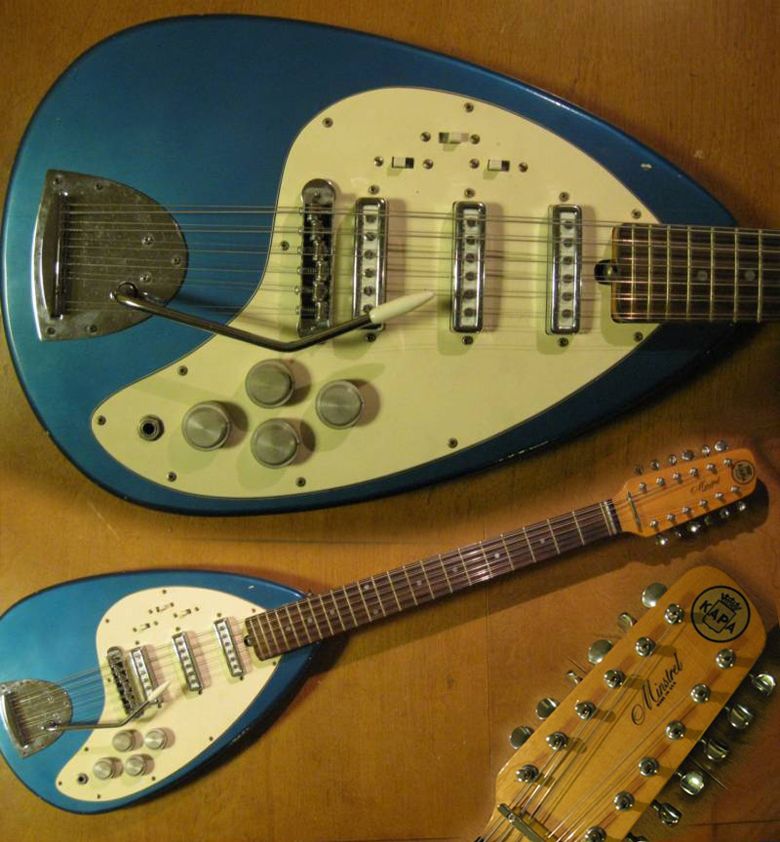
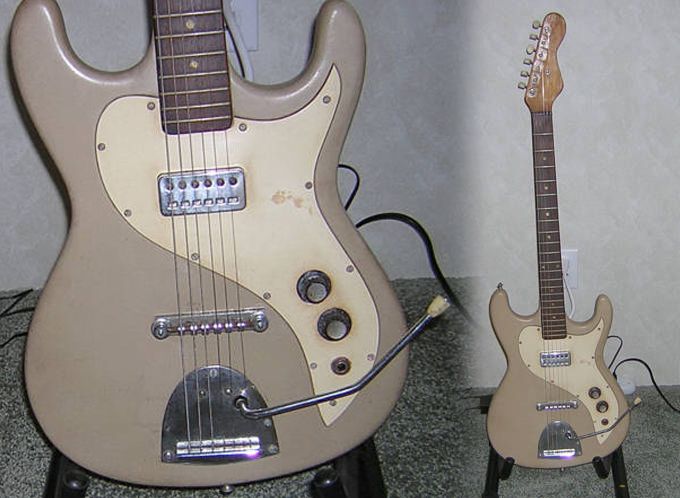
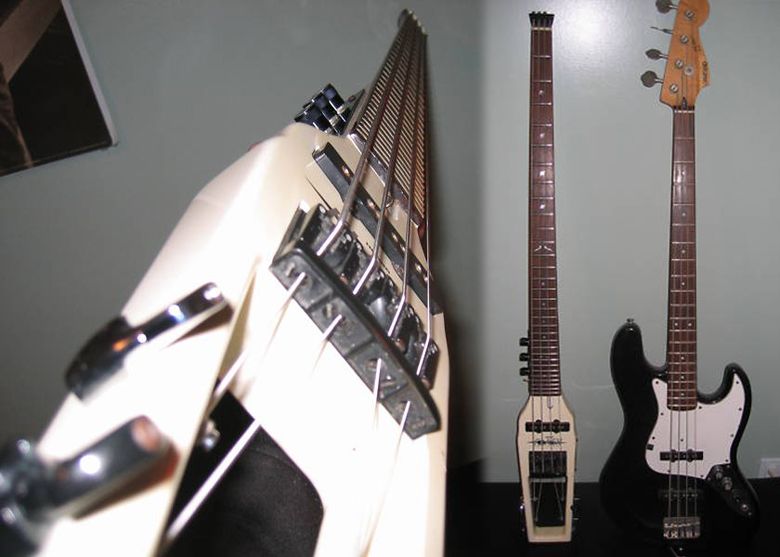
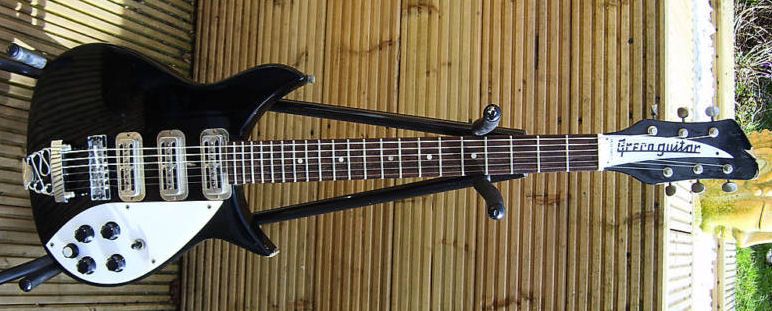 Rickenbacker
Rickenbacker